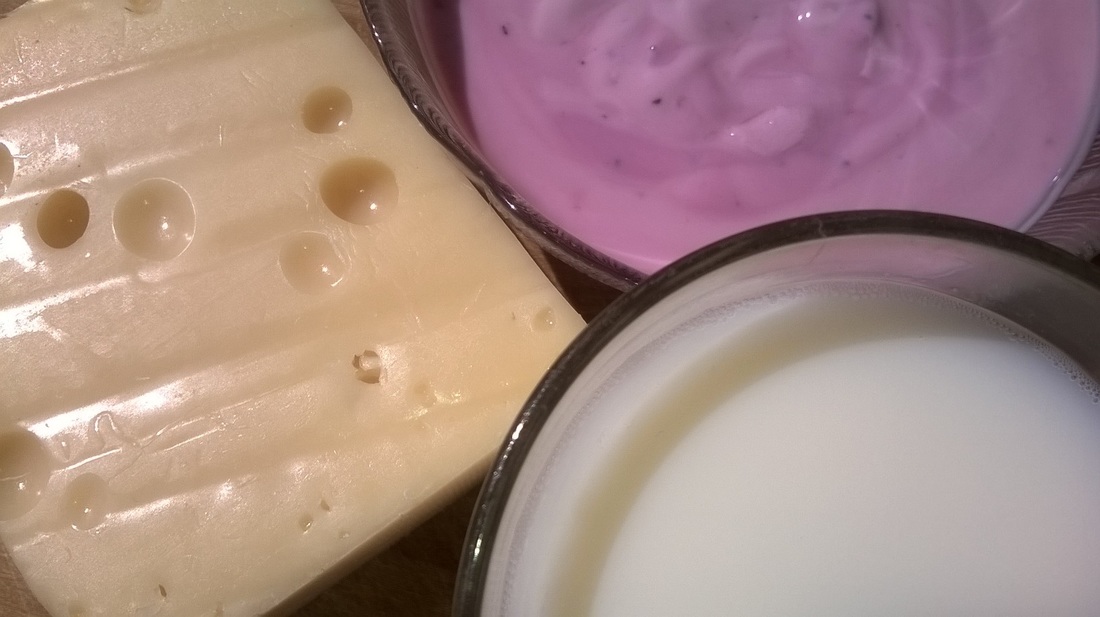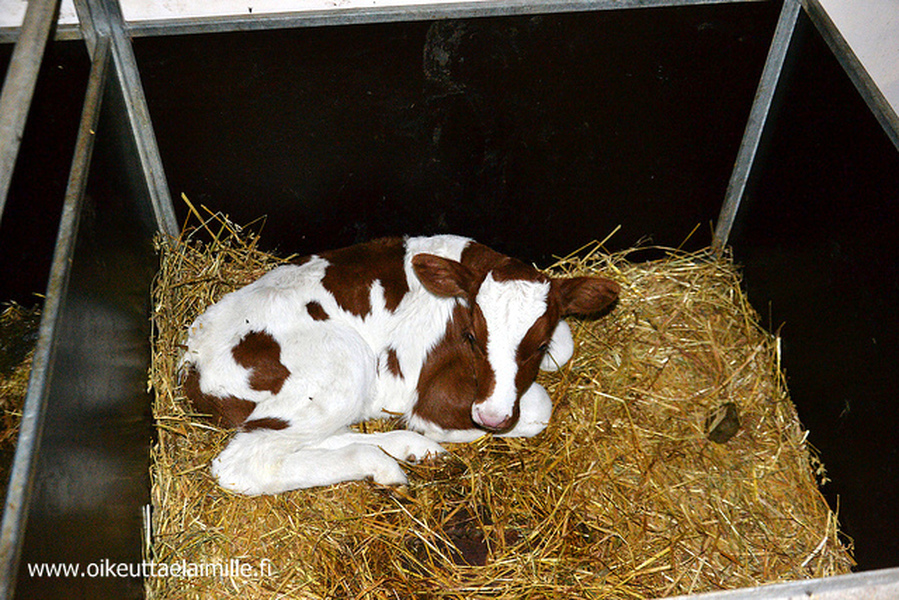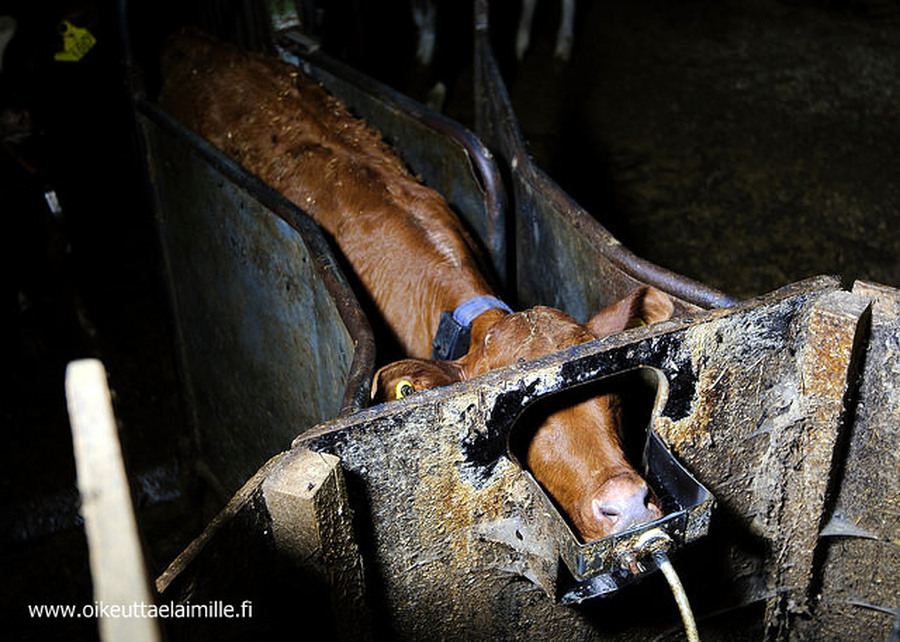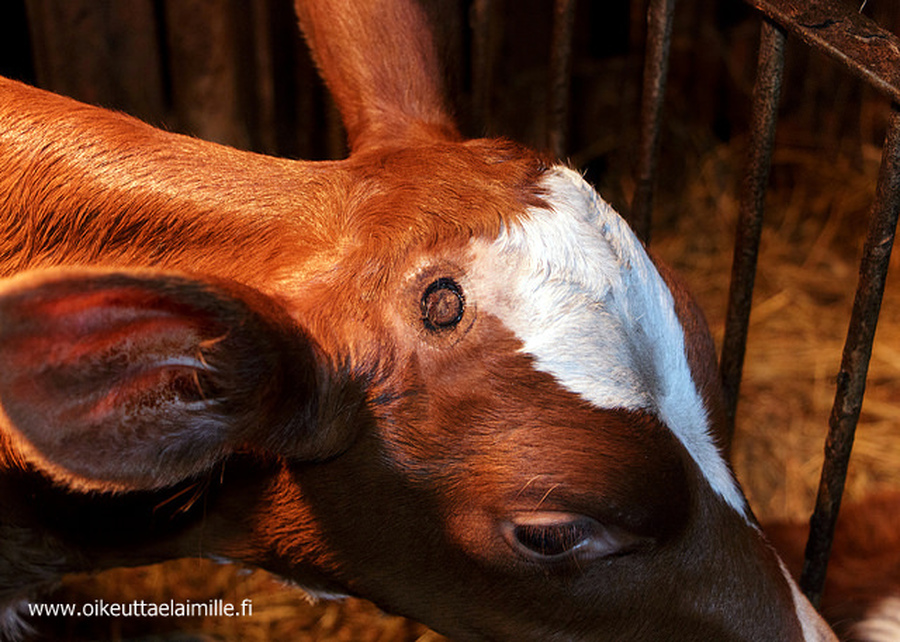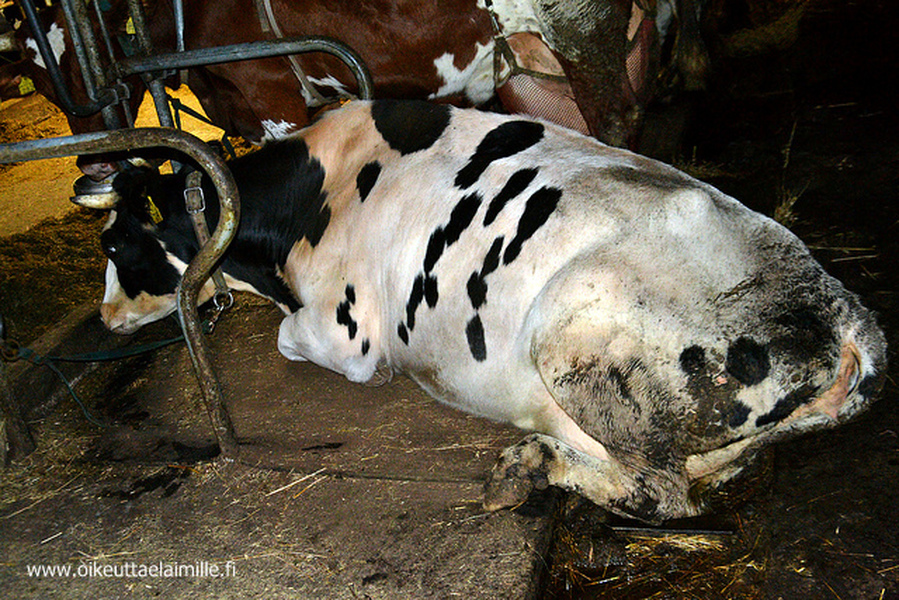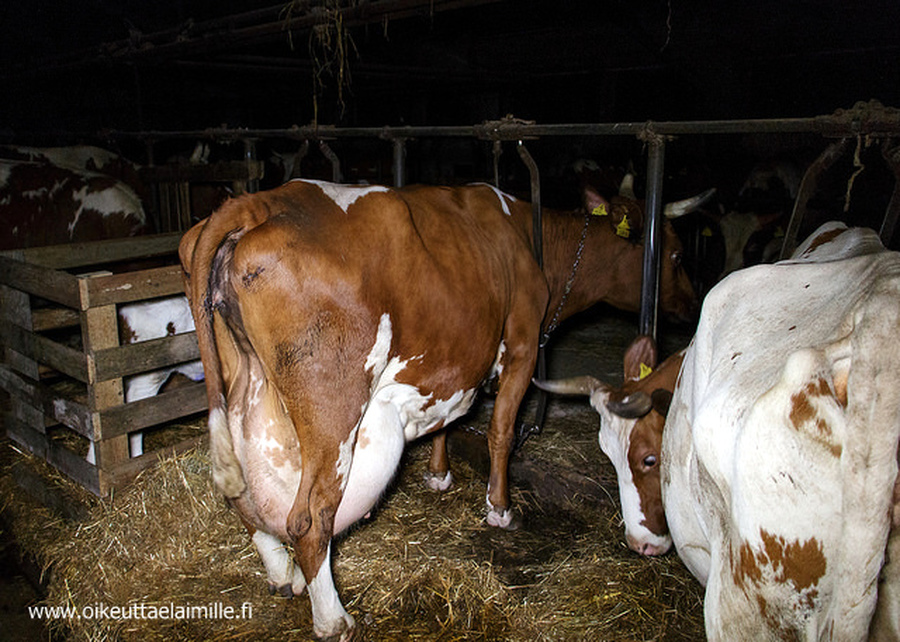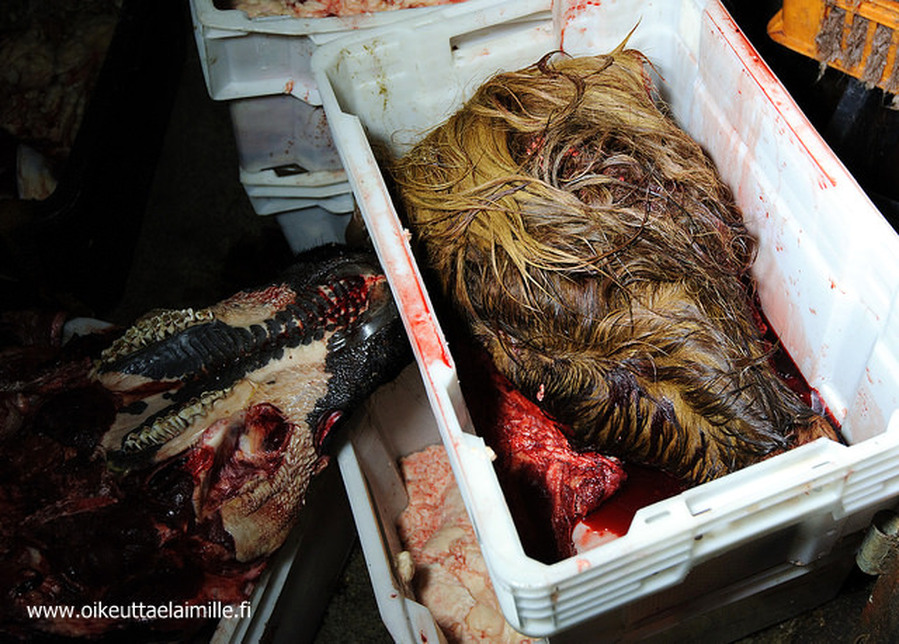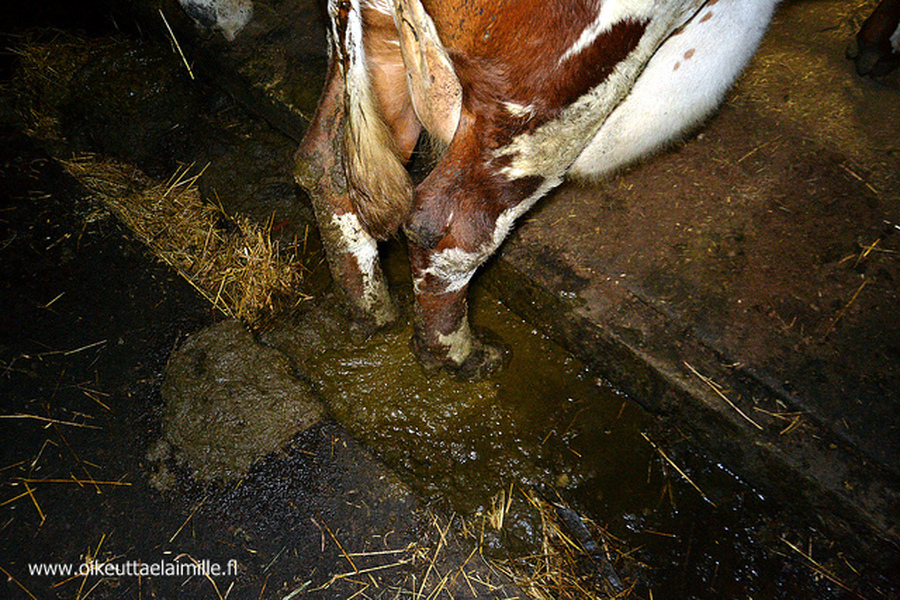Dairy
Cow’s milk is for calves, not for humans
A dairy product or milk product is food produced from the breast milk of mammals, primarily cattle, buffaloes, goats, sheep and camels. It is the primary source of nutrition for infant mammals before they are able to digest other types of food. This article is focusing on milk from cows, who account for 83 percent of the global milk production.
According to the FAO, there were 271 million dairy cows in the world in 2013 with India, Brazil and Sudan being the largest holders of dairy cattle. Most of the dairy cows in developed countries live on factory farms, where they are treated as mere milk-producing machines, and when their milk production starts to dwindle, they are killed for their meat. The global demand for dairy is increasing rapidly, which means increased animal suffering and increased damage to the environment.
Cows are intelligent, sensitive and social creatures
Cows are very intelligent and sensitive animals who can solve problems. They have great memories and can learn and respond to their names, and mother cows have individual calls for each of her calves. Cows are very social and form close, lifetime friendships and social hierarchies and like to spend much time with their closest friends. Cows love to play games and they have a wide range of emotions and personality traits. A mother-cow has very strong bonds with her calf (and vice-versa), and both feel great distress when they are forcibly separated soon after the calf is born. If given the opportunity, a mother cow and her female calf often live their entire lives together.
Dairy cows are forcibly impregnated every year
Like all mammals, a cow’s body only produces milk after she has given birth. To produce milk for humans, a cow must be repeatedly impregnated, in practice every year. The impregnation is done by humans through artificial insemination. The cow is pregnant for nine months, after which she lactates for ten months. She is made pregnant again within three months of giving birth, while she is still lactating. The constant pregnancies, calvings and lactation puts an enormous pressure on the cow’s body.
Calves are separated from their mothers soon after birth
Shortly after birth, the calf is torn away from his/her mother so that the milk meant for him or her can be drunk by humans. Mother cows have very strong instincts to nurture and protect their calves and suffer immensely when their babies are taken away from them. Also the calves feel extreme distress and anxiety when separated from their mothers. Cows call and search for their calves for days, sometimes breaking out of fields and walking for kilometres hoping to find their babies. Under normal conditions, cows nurse their calves for nine to twelve months.
Male calves are killed or used by the veal industry
Male calves are useless for the dairy industry so they are usually either killed at birth or used by the veal industry. Many of the calves destined to become veal have to endure long-distance transports to other countries. In many countries the calves are kept chained in individual veal crates that are so small that the animals can barely move. The lack of exercise prevents normal muscle development, so that the flesh will remain tender.
The calves are fed milk replacers, a diet that intentionally is iron-deficient in order to induce anaemia causing pale flesh, which is preferred by the consumers. The calves are bucket-fed twice a day, while a calf would normally suckle his mother 4-10 times a day. The suckling instinct is so strong that the calves try to relieve their frustration by suckling on each other or on the workers. Often the calves become so weak that they cannot walk or even stand, which is likely to provoke abuse from workers. The calves are usually slaughtered at the age of four to six months old, when they are still tiny babies.
Also the female calves, who are to be used by the dairy industry, spend their first months isolated in tiny crates, and are fed milk substitutes.
Disbudding and dehorning are extremely painful procedures
Female calves who are to be used by the dairy industry are commonly disbudded by having a hot iron pressed into their head, to damage the immature horn tissue (buds) and thereby prevent them from growing horns. The horns are removed to make the animals easier to handle and to prevent damage. Disbudding is immensely painful and traumatic for calves, and causes two third-degree burns. Despite this, most calves are not given any pain relief during the procedure or for the burns.
Older cows are dehorned, which is even worse than disbudding. Dehorning requires amputation of the horn, and tools used for this procedure include saws, sharp wires, or gruesome guillotine dehorners, which also slice off the surrounding skin. The wound caused by the amputation can take several months to heal. Many animals suffer from post-operative problems, and some even die.
Dairy cows commonly spend almost their entire lives being tied up
In some rearing systems cows are allowed to go outside part of the year, but many cows never see sunlight or green pastures, as so happily portrayed in the dairy commercials. On many factory farms, cows are kept indoors and tied up most of the time. The cows cannot move or turn around – only stand or lie down. Many times the space is so small, that the large animals are forced to stand with their feet in the manure drains. The inactivity causes stress and frustration, and the cows often exhibit stereotypical behaviour such as tongue rolling. Some cows are confined to massive, crowded lots, where they are forced to live amid their own, sometimes knee-deep faeces.
As a general rule, dairy cows on modern factory farms have little or no possibilities to fulfil their most basic desires, like walking long distances in search for food, interact with other animals and taking care of their calves. Many dairy cows stand all day long on hard concrete floors, which together with the weight of their heavy udders often leads to painful hoof and leg problems, such as lameness. The hard surface makes it difficult for the cows to lie down, and causes chafing. Two or three times a day, the cows are hooked up to milking machines. In addition to the horrors of “normal” factory farm life, many cows have to endure extreme neglect and abuse from workers.
Cows are often not even able lie down comfortably.
Dairy cows have been bred to produce more milk than their bodies endure
The modern factory-farmed dairy cow has been selectively bred – and sometimes also given antibiotics and hormones - to provide as much milk as possible. A typical dairy cow can produce up to 50 litres milk a day - much more than any calf could drink and than a cow’s body can cope with. It is not uncommon that the cow’s udder is so heavy and stretched that she is forced to wear udder aids. Dairy cows often suffer from mastitis, a painful infection of the udder. Other common health problems are infertility and lameness.
In India, spent dairy cows are used by the leather industry
A large portion of the world’s leather comes from India, and often the animals used for this purpose are spent dairy cows. The cows are marched to the slaughterhouse for days without food or water. The workers break the cows’ tails and rub chilli peppers and tobacco into their eyes forcing them to get up and walk after they collapse from exhaustion. Most animals are injured or sick when they reach the slaughterhouse. Once inside, their feet are bound together and their throats are cut, often with dirty, blunt knives in full view of one another. The floors are covered with faeces, urine, blood and guts. Some animals are even skinned and dismembered alive.
Live animal export
Each year, more than a billion live farm animals (poultry, cattle, pigs, sheep, goats and equines) are transported long distances to other countries – often overseas, when the journey can take weeks. Live animal export is a worldwide phenomenon, with Australian livestock export being the largest component of the trade. Long distance transport causes enormous suffering to the animals, and many of them die during the journey. The animals have to endure extreme overcrowding, exhaustion, dehydration, injuries, diseases, stress and abuse from workers. The animals range from weak, worn-out animals with brittle or broken bones to young, unweaned calves who are forced to stand for hours and days in overcrowded trucks without food or rest. The animals are often exported to countries with poor animal protection, and many animals are subjected to abuse and finally face an extremely painful and brutal death at the slaughterhouse.
Slaughter
When a dairy cow reaches the age of four or five years, her body is usually so worn out that she doesn’t produce the required amount of milk, so she is sent to slaughter. The natural lifespan for a dairy cow is 15-25 years. Dairy cows often have to endure long-distance transports in crowded trucks through weather extremes to the slaughterhouse. The journey is very stressful for the animals, who typically are not given any food, water or rest, and many die in the trucks. Many cows are so worn out, crippled or exhausted that they can barely walk or stand, so workers tie ropes or chains around the animals’ legs, and drag them off the trucks, sometimes breaking the animals’ bones when they fall. Some cows are so exhausted, shocked and frightened that they refuse to get out of the trucks, so workers beat them or give them painful electric shocks to get them to move. Also inside the slaughterhouse it is common for workers to make excessive use of the electric prod to get the terrified animals to move.
In modern Western slaughterhouses the cows are stunned by using a captive bolt-gun, usually in full view of the animals waiting for their turn. The animals can also smell the blood and stress hormones from their slaughtered companions, which increases their anxiety. The stunning is meant to render the animals insensible to pain. It is not uncommon that the first stunning attempt fails, and the cow must be shot repeatedly in the head. Thereafter the cow is hung up by one leg and her throat is cut. If the stunning has not been made properly, the cow can still be fully conscious at this stage. The slaughterhouse lines move very quickly and many workers are poorly trained - the line is never stopped because an animal is alive. According to American slaughterhouse workers, they frequently cut the legs off completely conscious cows who are still blinking and making noises. The cow simply dies piece by piece. Finally the cow is skinned and gutted and she becomes meat for humans to eat.
Impacts of dairy products on human health
Cow’s milk is baby calf growth fluid with the purpose to turn a 40-kilogramme calf into a 700-kilogramme cow as rapidly as possible. As a rule, humans are the only species that drink the breast milk from another species, and the only species that drink milk beyond infancy. Cow's breast milk is not designed for human consumption.
Since childhood we have been brainwashed into thinking that dairy is absolutely necessary for our health, especially our bones. However, milk and dairy products are not necessary in the diet – on the contrary, they can be directly harmful. Studies suggest that a high consumption of dairy products may increase the risk of cancers of the reproductive system, especially breast cancer in women and prostate cancer in men.
Clinical research shows that the calcium in milk and dairy doesn’t strengthen the bones, but rather weakens them. A study by Uppsala University suggests that consuming more milk could actually be associated with higher mortality and bone fractures in women and higher mortality in men. Dairy contains significant amounts of cholesterol and saturated fat, which can increase the risk of heart disease. Dairy also contains contaminants that range from hormones (both natural and synthetic) to pesticides, that can be harmful to human health. Additionally, type 1 or childhood-onset diabetes is linked to consumption of dairy products in infancy.
Dairy and meat are our main sources of phthalates – chemical substances added to plastics to increase their flexibility, transparency, durability and longevity. Phtalates are also used e.g. in cosmetics and pesticides. Studies show that exposure to phthalates is greater from ingestion of certain foods, rather than exposure via water bottles as is most often first thought of with plastic chemicals. Researchers have linked phthalates to asthma, attention-deficit hyperactivity disorder, breast cancer, obesity and type II diabetes, low IQ, neurodevelopmental issues, behavioral issues, autism spectrum disorders, altered reproductive development and male fertility issues.
Approximately 75 percent of the world’s population is lactose intolerant, which means that the body does not produce enough lactase to break down lactose, a sugar found in milk and many other dairy products. About 25 percent of the world’s population is lactase persistent, because during human evolution, some humans experienced a gene mutation allowing them to process lactose as adults.
Cows are commonly given antibiotics to combat mastitis and other diseases as a preventive measure. The excessive use of antibiotics on factory farms is the main cause for antibiotic-resistant bacteria, which is a huge threat to human health.
The source of fresh, white milk.
Impacts of the dairy industry on the environment
As in all intensive animal farming, the industrial dairy production is a serious threat to the environment. The dairy industry produces significant amounts of greenhouse gases which contribute to climate change and all the huge problems linked to it. The dairy industry contributes to the loss of ecologically important areas, such as forests, prairies and wetlands, through clearing them for grazing land and production of feed. Predators and and other species are frequently killed to make room for farms or to protect livestock.
The widespread use of pesticides, herbicides and chemical fertilisers used in the production of feed crops destroy waterways. The oestrogen excreted by dairy cows can enter rivers and lakes, and changes the male fish more into a female fish which can prevent them from breeding.
The dairy industry is responsible for a a massive waste of natural resources, such as water. To produce one glass of milk, 255 litres of water is required.
If you’re buying dairy you are also subsidising the meat and veal industry
Many people are vegetarian for ethical reasons, and don’t want to support the meat industry. What many vegetarians don’t realise is the fact that if they are buying dairy products, they are in fact subsidising the meat and veal industry. The dairy industry IS the meat industry.
What you can do to help dairy cows
One of the most important things you can do to help dairy cows is to go vegan!
As in all intensive animal farming, the industrial dairy production is a serious threat to the environment. The dairy industry produces significant amounts of greenhouse gases which contribute to climate change and all the huge problems linked to it. The dairy industry contributes to the loss of ecologically important areas, such as forests, prairies and wetlands, through clearing them for grazing land and production of feed. Predators and and other species are frequently killed to make room for farms or to protect livestock.
The widespread use of pesticides, herbicides and chemical fertilisers used in the production of feed crops destroy waterways. The oestrogen excreted by dairy cows can enter rivers and lakes, and changes the male fish more into a female fish which can prevent them from breeding.
The dairy industry is responsible for a a massive waste of natural resources, such as water. To produce one glass of milk, 255 litres of water is required.
If you’re buying dairy you are also subsidising the meat and veal industry
Many people are vegetarian for ethical reasons, and don’t want to support the meat industry. What many vegetarians don’t realise is the fact that if they are buying dairy products, they are in fact subsidising the meat and veal industry. The dairy industry IS the meat industry.
What you can do to help dairy cows
One of the most important things you can do to help dairy cows is to go vegan!
